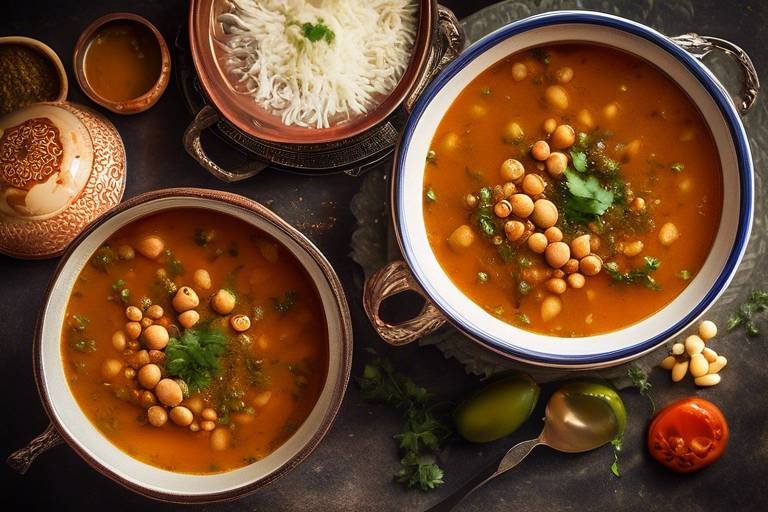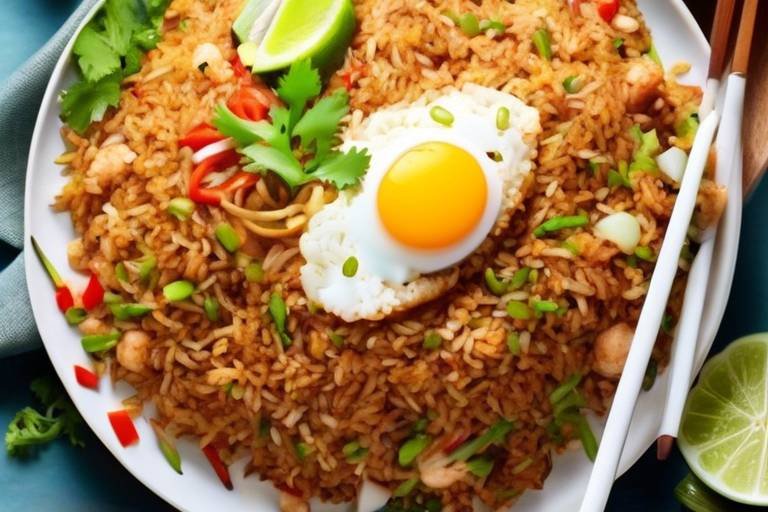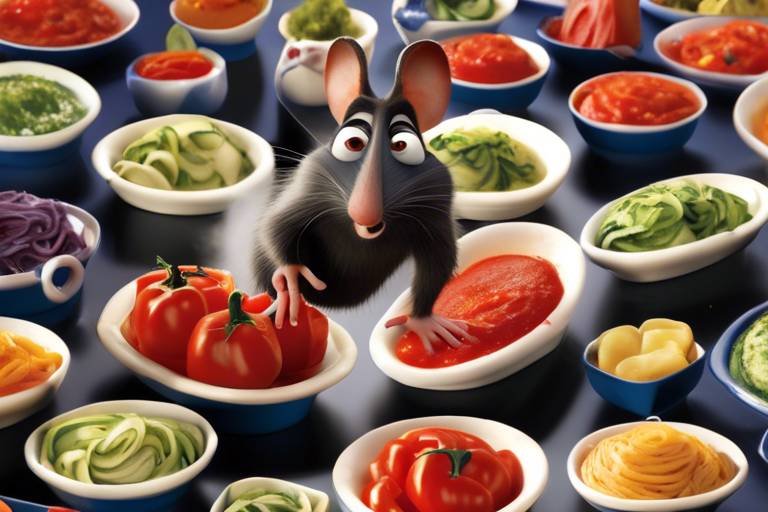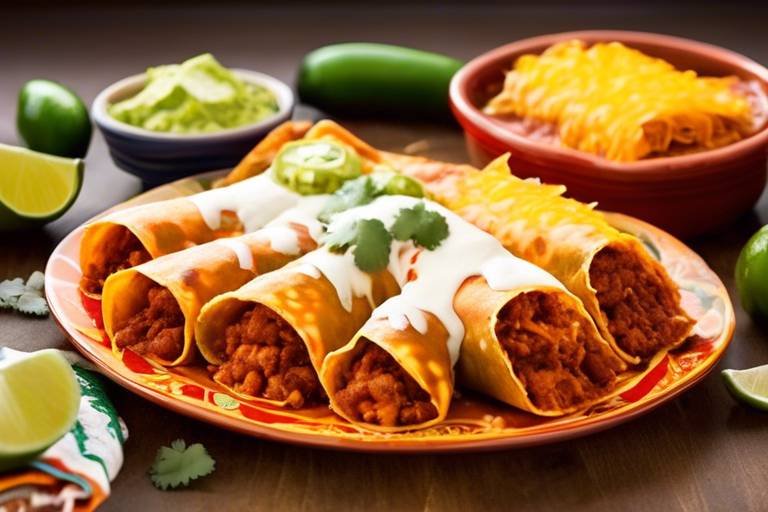How to Make Authentic South Korean Bibimbap
Are you ready to dive into the vibrant world of South Korean cuisine with a steaming bowl of Bibimbap? This traditional dish is a delightful mix of flavors and textures that will tantalize your taste buds and leave you craving more. Let's uncover the secrets of creating an authentic Bibimbap that will transport you to the bustling streets of Seoul with each mouthful.
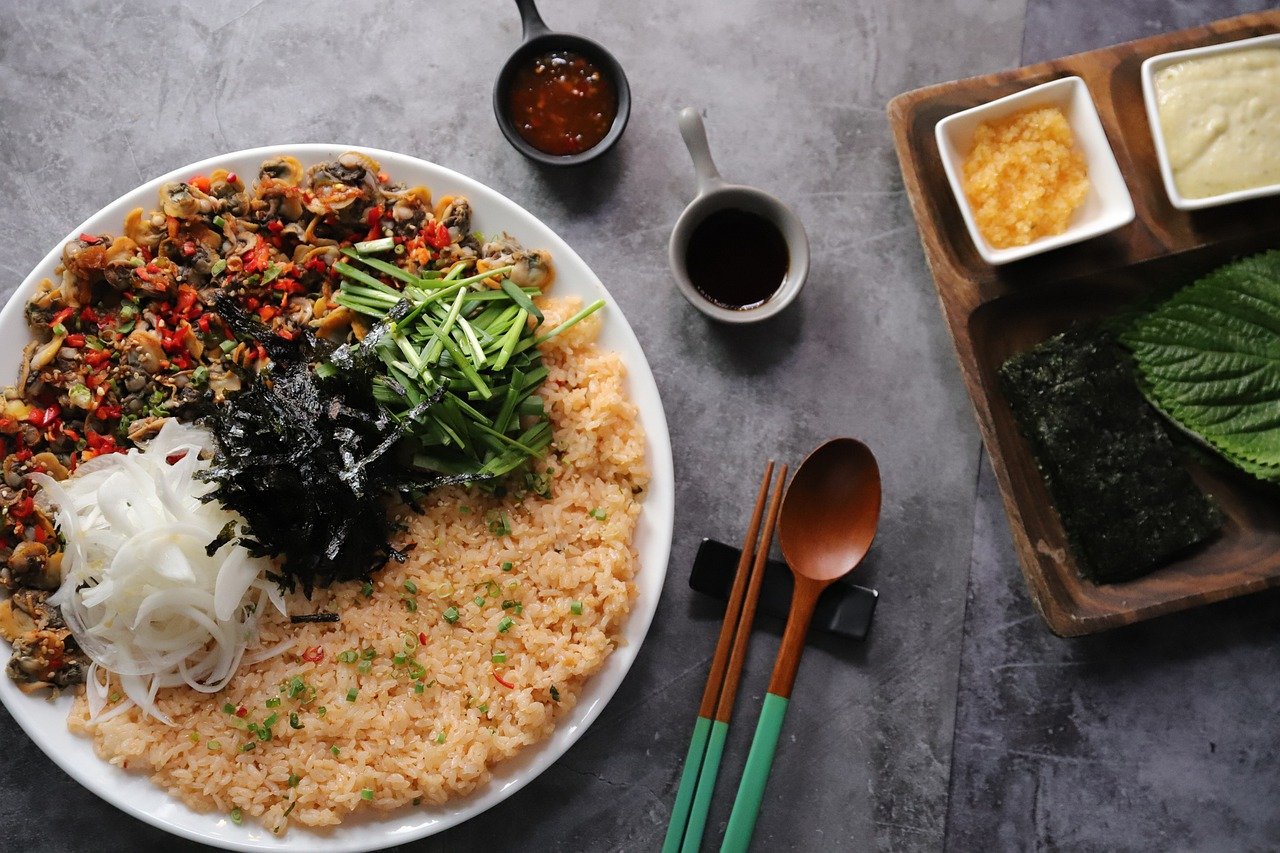
Origin of Bibimbap
Bibimbap, a beloved Korean dish known for its vibrant colors and bold flavors, has a rich history that dates back centuries. The word "bibimbap" itself translates to "mixed rice," reflecting the essence of this dish where various ingredients are combined harmoniously. Originating in Korea, Bibimbap was traditionally consumed as a way to use up leftovers, making it a practical and sustainable meal choice. Over time, it evolved into a popular dish celebrated for its taste, nutritional value, and cultural significance.
The roots of Bibimbap can be traced back to the Joseon Dynasty in Korea, where it was enjoyed by royalty and commoners alike. The dish symbolizes the Korean philosophy of balance and harmony, as it brings together an assortment of ingredients to create a wholesome and satisfying meal. Each component of Bibimbap represents a different aspect of Korean cuisine, from the fresh vegetables to the savory protein and spicy gochujang sauce.
With its origins deeply intertwined with Korean culture and culinary traditions, Bibimbap has transcended borders and gained popularity worldwide. Its appeal lies not only in its delicious taste but also in its versatility, allowing for endless variations and personalization to suit individual preferences. Whether enjoyed in a traditional Korean setting or a modern fusion restaurant, Bibimbap continues to captivate food enthusiasts with its unique blend of flavors and textures.
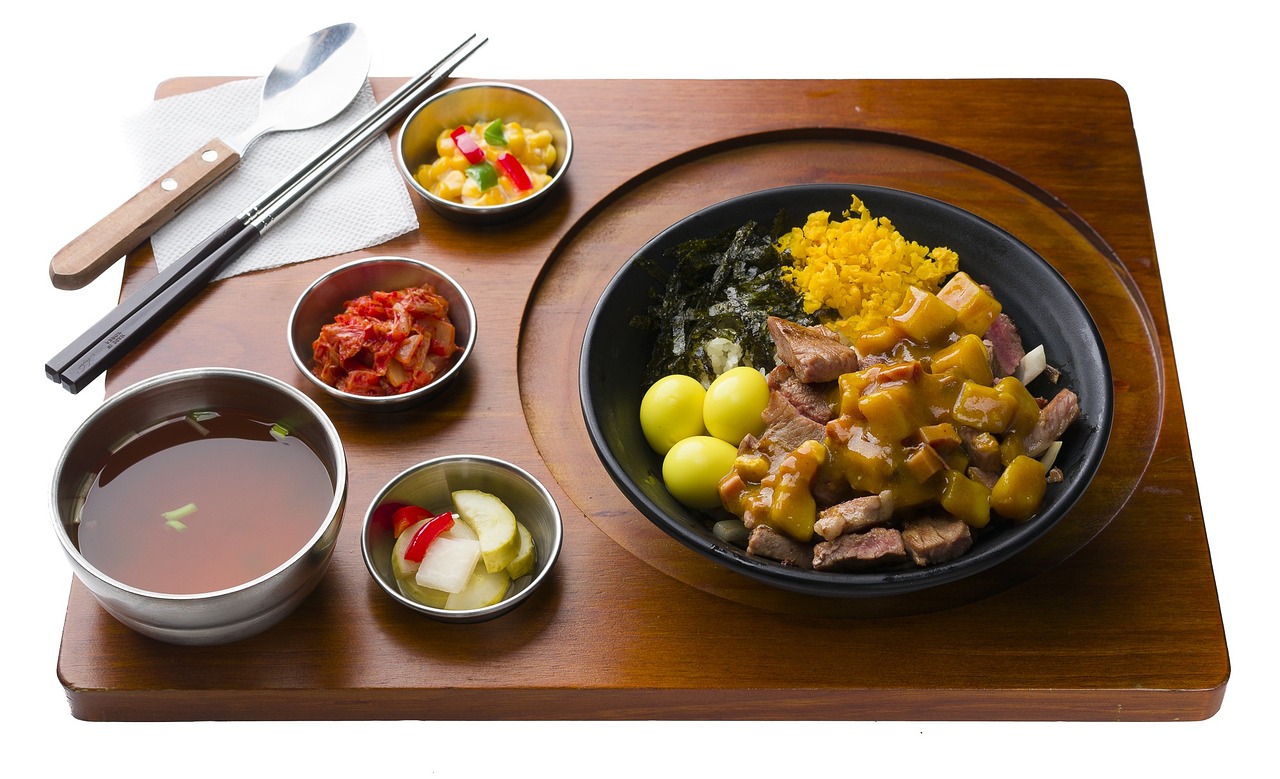
Ingredients for Bibimbap
When it comes to creating an authentic and mouth-watering Bibimbap, the key lies in selecting the right ingredients that will harmonize together to form a delectable dish. The essential components for a traditional Bibimbap include:
Rice: The foundation of Bibimbap is steamed white rice, which serves as the base for all the other ingredients. It's important to cook the rice to perfection, ensuring a fluffy texture that will complement the flavors of the dish.
Assorted Vegetables: Bibimbap is known for its colorful array of vegetables, such as carrots, spinach, mushrooms, zucchini, and bean sprouts. These vegetables are typically julienned and sautéed to retain their freshness and crunchiness.
Protein Source: The protein component of Bibimbap can vary, with popular choices including thinly sliced beef (bulgogi), chicken, pork, or a vegetarian option like tofu. The protein is marinated and cooked to perfection, adding depth of flavor to the dish.
Gochujang Sauce: A crucial element in Bibimbap is the gochujang sauce, a spicy and savory condiment made from fermented soybeans and red chili paste. This sauce adds a kick of heat and umami flavor to the dish.
By combining these key ingredients in the right proportions, you can create a vibrant and satisfying Bibimbap that is sure to impress your taste buds.
Q: Can I use brown rice instead of white rice for Bibimbap?
A: While white rice is traditionally used in Bibimbap for its fluffy texture, you can certainly substitute it with brown rice for a nuttier flavor and added nutritional benefits.
Q: Is Bibimbap spicy?
A: The level of spiciness in Bibimbap can be adjusted based on your preference for heat. The gochujang sauce provides a spicy kick, but you can control the amount to suit your taste.
Q: Can I make Bibimbap ahead of time?
A: Bibimbap is best enjoyed fresh, as mixing the ingredients just before eating ensures optimal flavor and texture. However, you can prepare the components in advance and assemble them when ready to serve.
Q: Are there vegetarian options for Bibimbap?
A: Absolutely! You can customize Bibimbap to suit a vegetarian diet by using tofu or tempeh as the protein source and incorporating a variety of colorful vegetables for a delicious meat-free version.
Q: What makes Bibimbap a healthy meal choice?
A: Bibimbap offers a balanced combination of carbohydrates, protein, vitamins, and minerals from its diverse ingredients, making it a nutritious and wholesome meal option that can be enjoyed as part of a well-rounded diet.
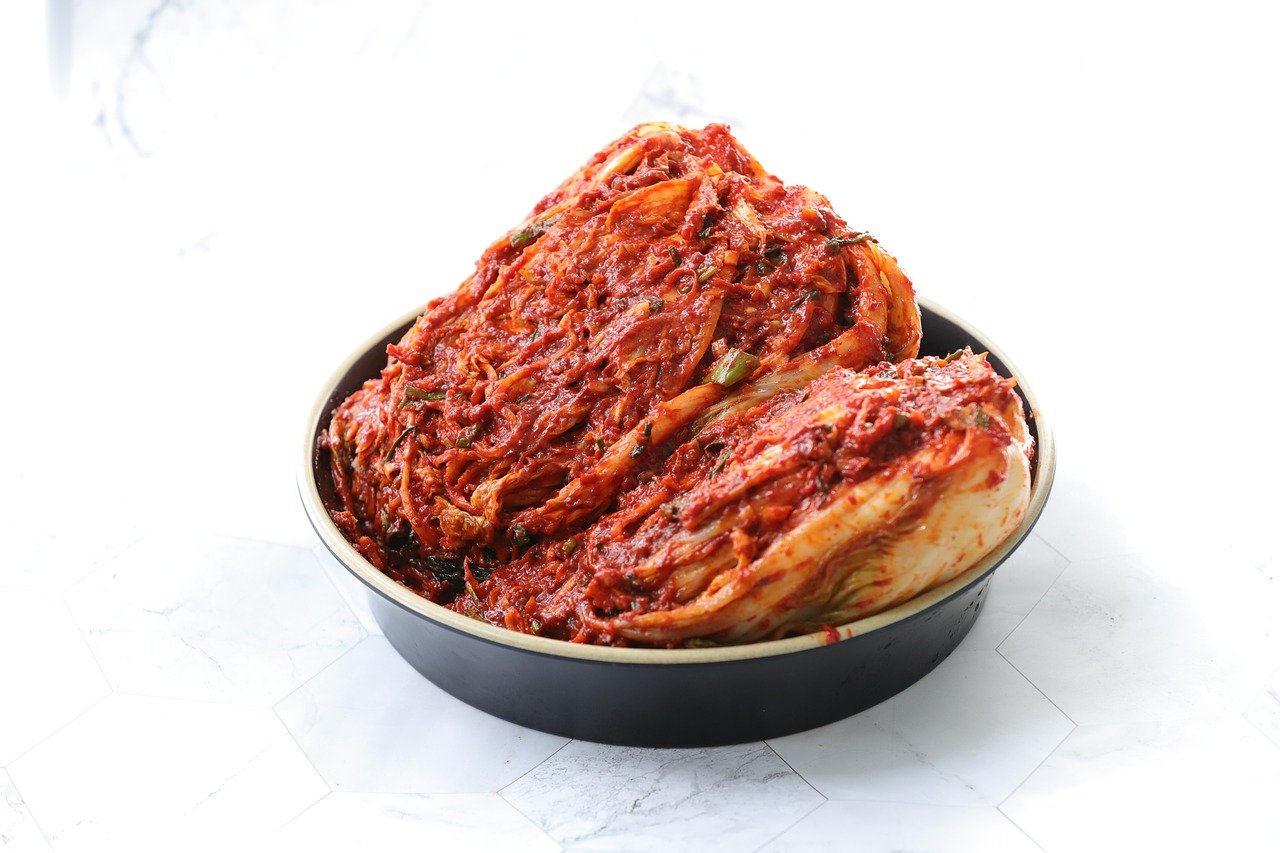
Preparing the Rice
Preparing the Rice: When it comes to making authentic Bibimbap, the rice plays a crucial role as the base of this flavorful dish. To prepare the rice, start by rinsing it thoroughly to remove excess starch, which helps achieve a fluffy texture once cooked. Then, cook the rice in a rice cooker or on the stovetop according to the package instructions, ensuring it's neither too wet nor too dry. Once the rice is cooked, season it with a mixture of sesame oil, salt, and a hint of sugar for a subtle yet aromatic flavor that pairs perfectly with the other components of Bibimbap.
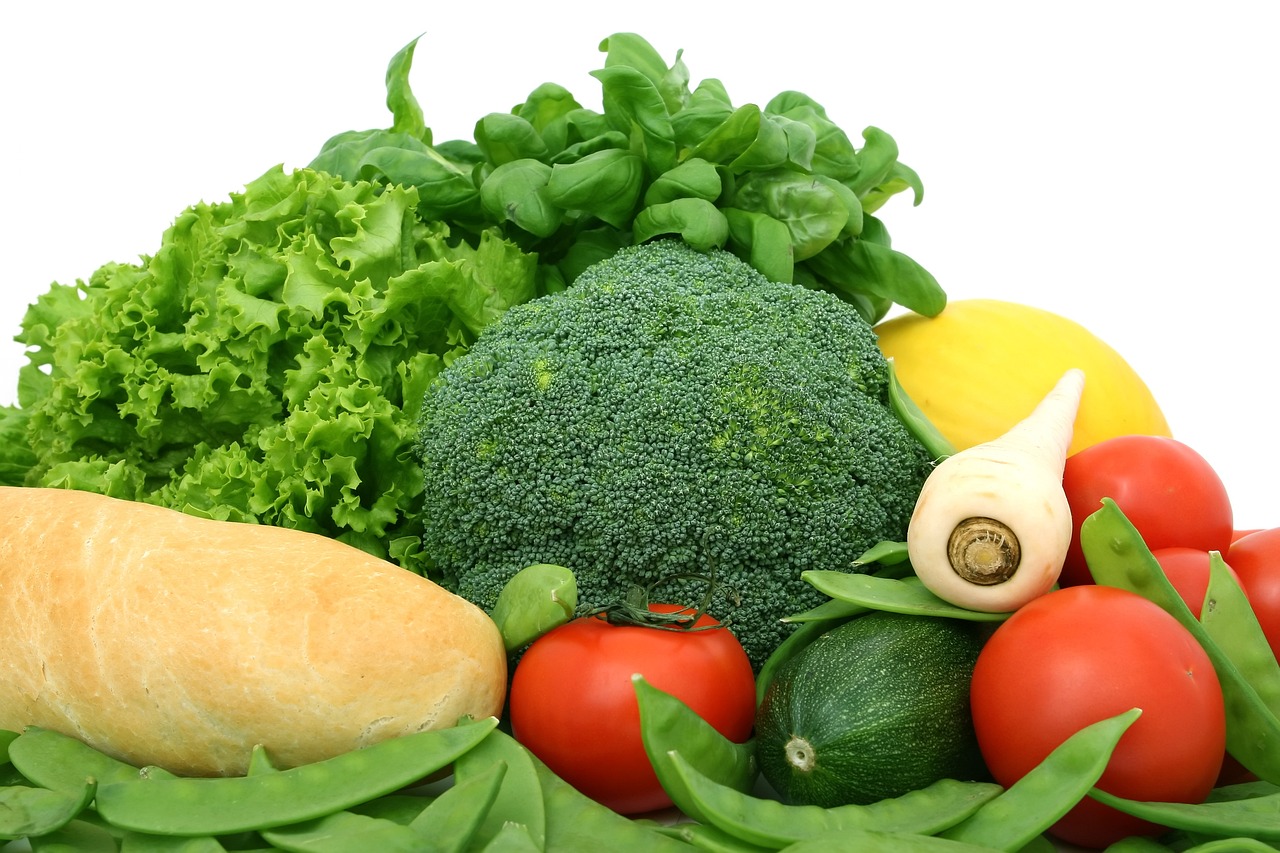
Cutting and Preparing Vegetables
When it comes to creating a delicious and visually appealing Bibimbap, the process of cutting and preparing the vegetables plays a crucial role. Imagine yourself in a bustling Korean kitchen, surrounded by vibrant colors and enticing aromas as you carefully julienne and sauté an array of fresh produce. Each vegetable, from the crisp carrots to the tender spinach, contributes its unique texture and flavor to the final dish.
Picture the precision required to slice the mushrooms thinly and the patience needed to blanch the bean sprouts just right. The art of vegetable preparation in Bibimbap lies in achieving a harmonious balance of flavors and textures, ensuring that each bite is a delightful explosion of taste in your mouth.
As you chop and sauté, consider the symphony of colors you are creating – the bright orange of the carrots, the deep green of the spinach, the earthy tones of the mushrooms, and the delicate sprouts adding a touch of freshness. These vegetables not only enhance the visual appeal of Bibimbap but also contribute essential nutrients, making it a wholesome and satisfying meal.
**Frequently Asked Questions** 1. **Is Bibimbap spicy?** - Bibimbap can be customized to suit individual preferences, including the level of spiciness. The gochujang sauce, a key component of Bibimbap, provides a spicy kick, but you can adjust the amount according to your taste. 2. **Can Bibimbap be made vegetarian?** - Absolutely! Bibimbap can be made vegetarian by omitting the meat and using tofu or additional vegetables as the protein source. The variety of vegetables and flavors in Bibimbap make it a versatile dish for vegetarians. 3. **What is the traditional way to eat Bibimbap?** - The traditional way to eat Bibimbap is to mix all the ingredients in the bowl thoroughly before eating. This ensures that you get a perfect combination of flavors and textures in every bite. 4. **Can I store leftover Bibimbap?** - While it's best to enjoy Bibimbap fresh, you can store leftovers in an airtight container in the refrigerator. When reheating, make sure to mix the ingredients well to redistribute the flavors evenly. 5. **What are some common variations of Bibimbap?** - Some popular variations of Bibimbap include Dolsot Bibimbap, which is served in a hot stone bowl, and Yukhoe Bibimbap, which features raw beef as the protein. You can also find regional variations with unique ingredients and flavors.
Cooking the Protein
When it comes to cooking the protein component for your Bibimbap, it's essential to pay attention to the flavors and textures that will complement the dish. Whether you opt for the classic thinly sliced beef, tender chicken, flavorful pork, or a vegetarian-friendly tofu alternative, the key lies in marinating and cooking the protein to perfection.
To infuse your protein with maximum flavor, consider marinating it in a mixture of soy sauce, sesame oil, garlic, and a touch of sugar for a sweet and savory profile. Allow the protein to marinate for at least 30 minutes to ensure that the flavors penetrate the meat or tofu thoroughly.
When it comes to cooking, ensure that your protein is cooked just right - tender and juicy for meats or crispy on the outside and soft on the inside for tofu. For beef, a quick stir-fry in a hot pan will do the trick, while chicken and pork can benefit from a slightly longer cooking time to ensure they are fully cooked through.
If you're opting for tofu as your protein choice, consider pan-frying it until golden brown and crispy on the outside, which will add a delightful contrast of textures to your Bibimbap. Remember to season your protein with a sprinkle of salt and pepper to enhance its natural flavors before adding it to your bowl.
By mastering the art of cooking the protein for your Bibimbap, you can elevate the dish to a whole new level, ensuring that each bite is bursting with delicious flavors and satisfying textures that will leave you craving more.
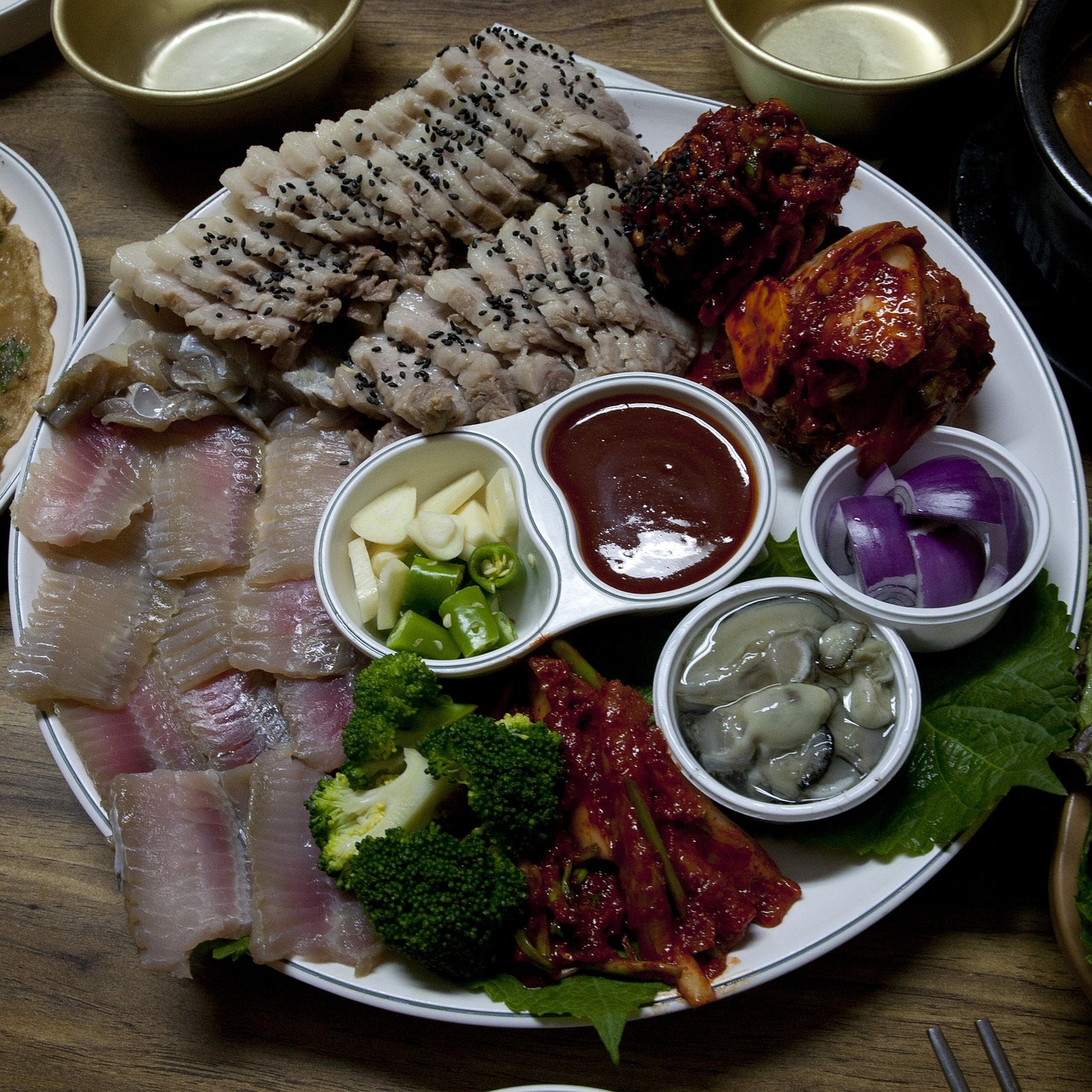
Assembling and Serving Bibimbap
When it comes to assembling and serving Bibimbap, it's all about creating a visually appealing and flavorful dish that will tantalize your taste buds. The process of putting together this iconic Korean meal is an art form in itself, where each ingredient plays a crucial role in the overall harmony of flavors.
Start by arranging a generous portion of steamed rice at the bottom of a large bowl, forming the base of your Bibimbap masterpiece. The rice serves as a sturdy foundation that will soak up all the delicious sauces and juices from the other components.
Next, strategically place the colorful array of sautéed vegetables around the perimeter of the bowl, creating a vibrant ring of freshness and crunch. From julienned carrots to tender spinach, each vegetable adds its own unique texture and flavor to the dish.
Now, it's time to add the star protein element to your Bibimbap. Whether you opt for marinated beef, succulent chicken, savory pork, or tofu, ensure that the protein is evenly distributed on top of the vegetables, providing a satisfying and hearty component to the dish.
Drizzle a generous amount of gochujang sauce over the assembled ingredients, adding a spicy and umami-rich kick that ties everything together. The gochujang sauce not only enhances the overall flavor profile but also gives Bibimbap its signature bold and fiery taste.
Before diving in, take a moment to appreciate the colorful and inviting presentation of your Bibimbap bowl. The vibrant hues of the vegetables, the glistening protein, and the rich red sauce create a feast for the eyes that is as delightful to look at as it is to eat.
When you're ready to enjoy your Bibimbap, grab a pair of chopsticks or a spoon and give everything a good mix, ensuring that each bite is a harmonious blend of flavors and textures. The act of mixing the ingredients together is not just a practical step but also a symbolic one, symbolizing the coming together of diverse elements to create a unified whole.
As you take your first bite of Bibimbap, savor the explosion of flavors in your mouth – the nutty rice, the crisp vegetables, the tender protein, and the spicy sauce all working in perfect harmony to create a culinary experience that is both comforting and exciting.
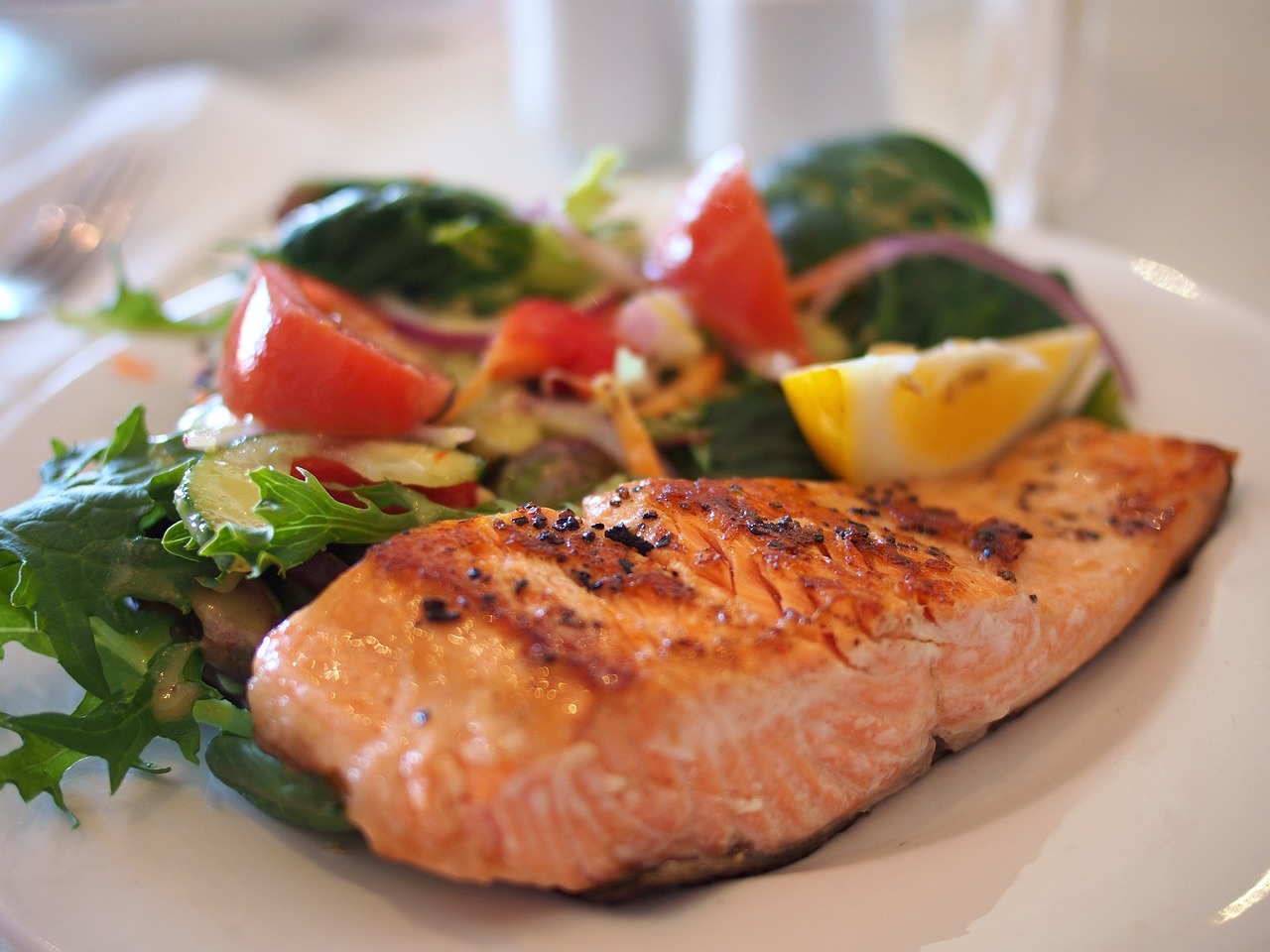
Variations and Customizations
When it comes to Bibimbap, the possibilities for variations and customizations are as vast as your imagination. One popular way to personalize your Bibimbap is by adding a fried egg on top, creating a luscious and creamy element that blends beautifully with the other ingredients. The runny yolk adds a richness that takes this dish to a whole new level of indulgence.
For those looking to amp up the veggie factor, consider incorporating different vegetables into your Bibimbap. From zucchini to bell peppers to shiitake mushrooms, the colorful array of veggies not only enhances the visual appeal of the dish but also provides a variety of textures and flavors that keep each bite exciting.
If you're feeling adventurous, why not experiment with alternative protein choices to suit your taste preferences? Whether you opt for succulent shrimp, tender chicken, or even crispy tofu, the protein component can be customized to cater to your cravings and dietary needs.
Another fun way to customize your Bibimbap is by playing around with the gochujang sauce. Depending on your spice tolerance and flavor preferences, you can adjust the amount of this signature sauce to achieve the perfect balance of heat, sweetness, and umami that suits your palate.
Remember, Bibimbap is a versatile dish that welcomes creativity and personalization. Feel free to mix and match ingredients, experiment with different combinations, and make each bowl uniquely yours. Whether you stick to tradition or put your own spin on this classic Korean favorite, the key is to enjoy the process and savor every mouthful of your homemade Bibimbap creation.
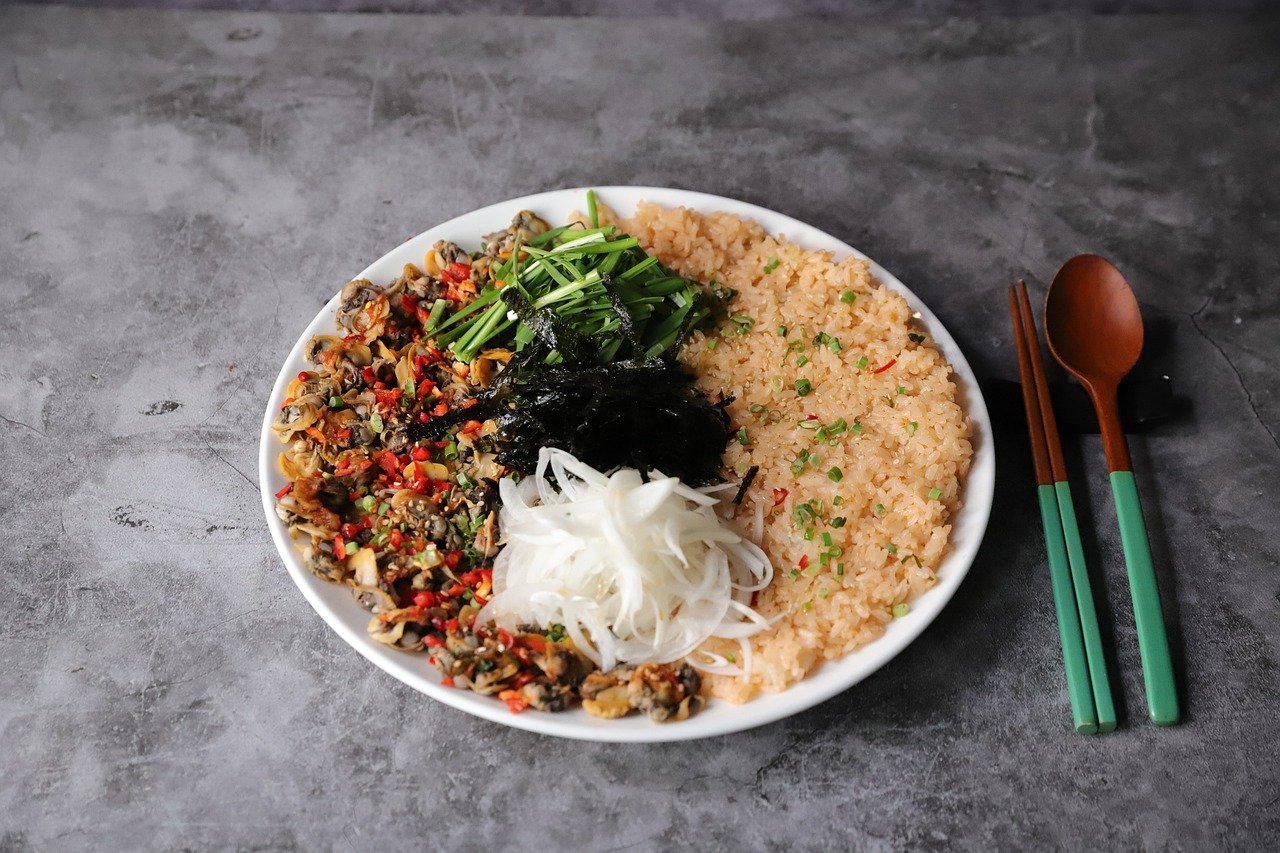
Health Benefits of Bibimbap
Bibimbap is not only a delicious and satisfying dish but also offers a plethora of health benefits that make it a wholesome choice for a meal. This traditional Korean dish is packed with a variety of nutrients that contribute to overall well-being. Let's delve into the health advantages of indulging in a flavorful bowl of Bibimbap.
One of the key benefits of Bibimbap is its balanced combination of macronutrients and micronutrients. The dish typically includes carbohydrates from rice, protein from sources like beef or tofu, and an assortment of vegetables, providing a well-rounded meal that fuels the body with essential nutrients.
Moreover, Bibimbap is rich in vitamins and minerals due to the diverse range of vegetables it contains. Vegetables such as spinach, carrots, mushrooms, and bean sprouts not only add vibrant colors and textures to the dish but also contribute essential nutrients like vitamin A, vitamin C, and potassium.
Additionally, Bibimbap can be a great source of fiber, especially when whole grain rice is used. Fiber is crucial for digestive health and can help regulate blood sugar levels and promote satiety, making Bibimbap a satisfying and nourishing meal choice.
Furthermore, the protein component in Bibimbap, whether it's beef, chicken, pork, or tofu, plays a vital role in muscle repair and growth. Protein is essential for overall health, and incorporating it into a dish like Bibimbap ensures that you are meeting your body's protein requirements in a flavorful way.
Overall, Bibimbap offers a well-rounded nutritional profile that can contribute to a balanced diet. By enjoying this colorful and flavorful dish, you not only satisfy your taste buds but also nourish your body with essential nutrients that support overall health and well-being.
Frequently Asked Questions
- What is the origin of Bibimbap?
Bibimbap originates from Korea and holds cultural significance as a beloved dish known for its delicious taste and health benefits.
- What are the essential ingredients for making Bibimbap?
Key ingredients for Bibimbap include rice, a variety of vegetables like carrots, spinach, mushrooms, bean sprouts, protein sources such as beef or tofu, and the iconic gochujang sauce.
- How do you assemble and serve Bibimbap?
To serve Bibimbap, you layer cooked rice in a bowl, arrange the prepared vegetables and protein on top, drizzle with gochujang sauce, and mix everything together before enjoying the flavorful combination.
- What are some common variations of Bibimbap?
Popular variations of Bibimbap include adding a fried egg, using different vegetables, or trying alternative protein choices to customize the dish according to personal preferences.
- What are the health benefits of Bibimbap?
Bibimbap offers a balanced mix of carbohydrates, protein, vitamins, and minerals in one satisfying meal, making it a nutritious and wholesome option for a flavorful dining experience.




